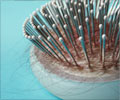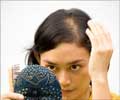
"Hair regeneration using hair stem cells is a promising therapeutic option emerging for hair loss, and molecular imaging can speed up the development of this therapy," saysByeong-Cheol Ahn, M.D., Ph.D., professor and director of the department of nuclear medicine at Kyungpook National University School of Medicine and Hospital in Daegu, South Korea. "This study is the first study of hair follicle regeneration using an in vivo molecular imaging technique."
The current research involves grafting hair stem cells in animal models to investigate if they can grow and proliferate as normal cells do. The progress of hair stem cell therapy is non-invasivelytracked with bioluminescentreporter genes in specialized substrates. There are several bioluminescent reporter genes originating fromnot only fireflies, but also beetles, glowworms and other bioluminescent organisms. The strategy of using bioluminescent reporter genesis ideal for stem cell research, because bioluminescence works only in living cells.
In this study, researchers used bioluminescence imaging usingfirefly luciferase coupled with D-luciferin to monitor the engraftment of hair follicle stem cells—called newborn fibroblasts—in mice to track their viability and development into hair folliclesover time. Bioluminescence imaging was performed five times over the course of 21 days after transplantation of the stem cells.
Results of the study showed successful bioluminescence imaging forhair regeneration with hair stem cell transplantation, and new hair follicles were apparent on the surface of skin samples under microscope. More studies will have to be conducted before clinical trials could be initiated to verify whether this therapy would work for human hair regeneration.
Source-Eurekalert














